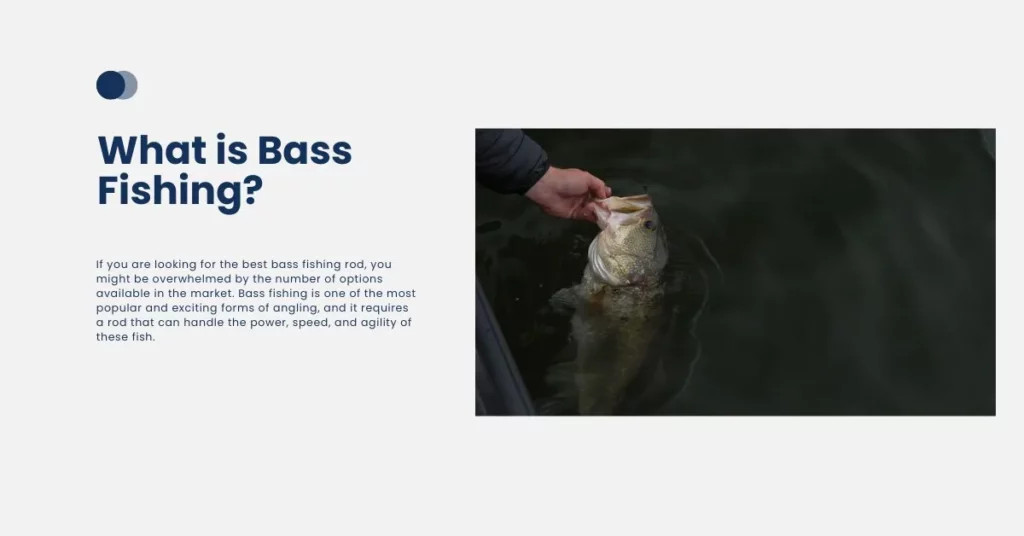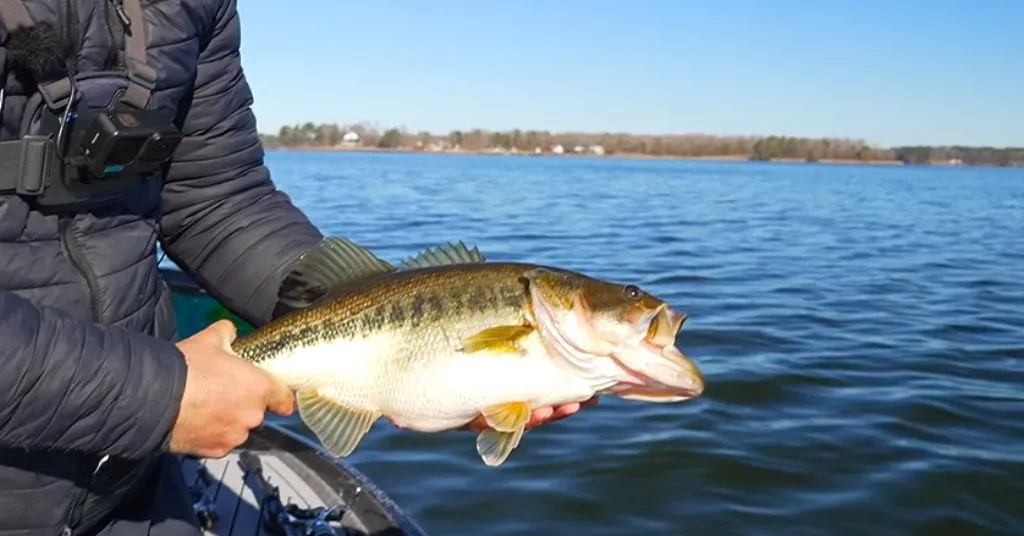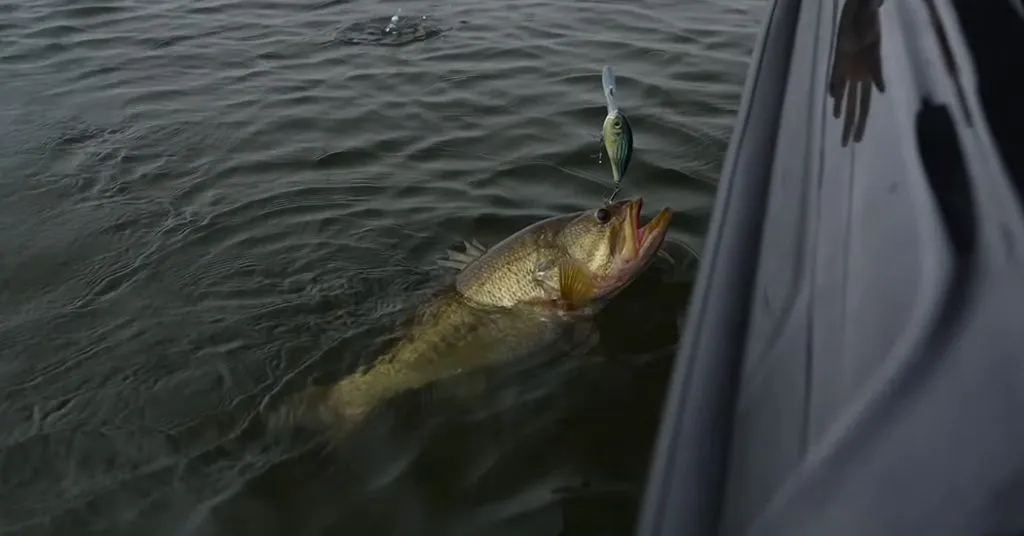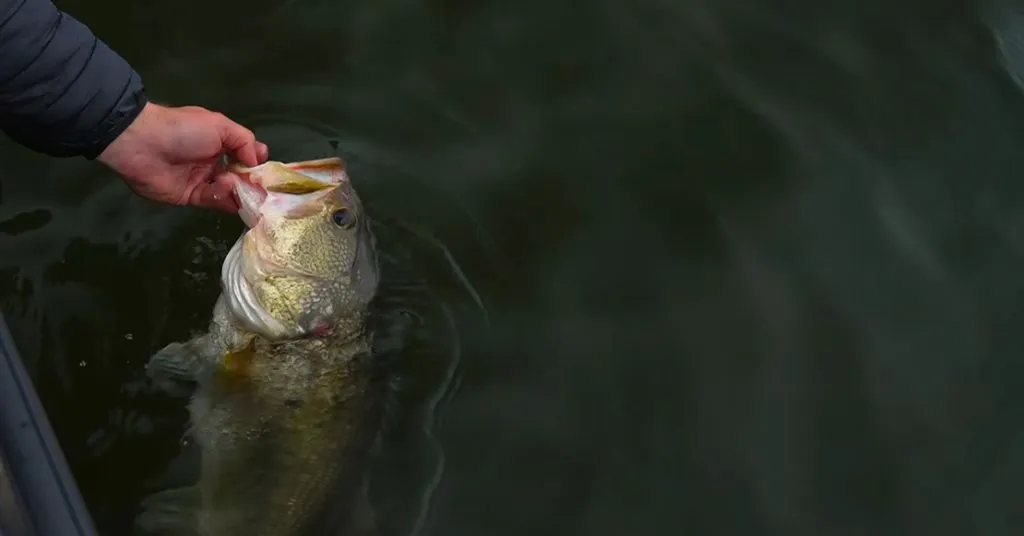
What is Bass fishing? It is a pursuit that has captivated anglers for generations, and beckons enthusiasts with its thrilling challenges and diverse species.
In this article, we delve into the essence of bass fishing, exploring its origins, the allure it holds for many, and the essential techniques for a successful angling experience.
What is Bass Fishing?

Bass fishing, rooted in the pursuit of black bass species like largemouth and smallmouth bass, transcends mere recreation—it’s an intricate dance between angler and prey. Understanding the distinct characteristics, habitats, and behaviors of these elusive fish lays the foundation for an engaging exploration of North America’s waters.
Tracing the historical roots reveals how this leisurely activity has evolved into a multibillion-dollar industry, intertwining tradition, culture, and sport.
Why is Bass Fishing So Popular?

The popularity of bass fishing is a multifaceted phenomenon. Beyond the intrinsic allure of a thrilling battle with a cunning and powerful adversary, bass fishing offers a connection to tradition and a sense of camaraderie. Anglers are drawn to the aesthetic appeal of bass, especially when they attain trophy sizes, adding an element of visual gratification to the experience.
The rich tapestry of famous anglers, tournaments, and records reinforces the sport’s prestige, while the inherent benefits, ranging from relaxation to conservation efforts, underscore its enduring popularity.
How to Catch a Bass Fish?

10 steps will help you learn how to catch a bass fish:
Step 1: Gather Your Equipment
Begin by selecting the appropriate gear for bass fishing. This includes a suitable rod, reel, fishing line, and various lures. Different conditions may require different equipment, so tailor your choices based on factors like water clarity, weather, and the specific bass species you’re targeting.
Step 2: Understand Bass Behavior and Habitat
Familiarize yourself with the behavior and habitat preferences of the bass species you’re targeting. Largemouth bass, for instance, often inhabit areas with vegetation and structure, while smallmouth bass may prefer clearer waters with rocky bottoms. Knowing where bass are likely to be helps increase your chances of a successful catch.
Step 3: Choose the Right Lures
Selecting the right lure is crucial. Different lures mimic different types of prey, so consider the prevailing conditions and the bass’s feeding habits. Plastic worms, crankbaits, spinnerbaits, and topwater lures are popular choices. Experiment with various lures to discover what works best on a given day.
Step 4: Master Casting Techniques
Practice your casting techniques to accurately place your lure where the bass are likely to be. Work on your accuracy and distance; a well-placed cast can significantly improve your chances of enticing a strike. Remember to cast near structures like submerged rocks, fallen trees, or aquatic vegetation where bass often hide.
Step 5: Experiment with Retrieval Methods
Once your lure is in the water, experiment with different retrieval methods. This could include slow retrieves, jerking motions, or pauses to simulate injured prey. Bass can be selective, so varying your retrieval technique can help trigger their predatory instincts.
Step 6: Pay Attention to Environmental Factors
Be mindful of environmental factors such as the time of day, weather conditions, and water temperature. Bass are often more active during dawn and dusk, and their behavior can change based on the season. Adjust your approach accordingly, adapting to the specific conditions you encounter.
Step 7: Practice Patience
Patience is key in bass fishing. Bass can be selective and may not strike immediately. Allow your lure to work its magic, and give the bass time to assess and respond. Avoid the temptation to constantly change lures or locations too quickly; sometimes, persistence pays off.
Step 8: Observe and Learn
Take note of what works and what doesn’t during your fishing sessions. Observe the bass’s behavior, the types of prey they seem to be targeting, and any patterns you notice. This observational learning will contribute to your overall proficiency as an angler.
Step 9: Follow Regulations and Ethical Practices
Adhere to fishing regulations, size limits, and catch-and-release practices to ensure the sustainability of bass populations. Respect the environment, fellow anglers, and the tranquility of the fishing experience.
Step 10: Enjoy the Experience
Finally, savor the entire experience of bass fishing. Whether you catch a trophy bass or not, relish the time spent on the water, the connection with nature, and the thrill of the pursuit. Each fishing trip is an opportunity to learn, improve, and appreciate the beauty of this captivating outdoor activity.
Conclusion
As we conclude our exploration of bass fishing, we invite readers to embrace the challenge, tradition, and camaraderie woven into its fabric. With a renewed appreciation for the artistry of angling, consider embarking on your bass fishing journey.
Whether novice or seasoned, the waters teem with possibilities, promising a fulfilling experience for those willing to cast their lines into the depths. Thank you for joining us on this expedition into the world of bass fishing, and may your future outings be filled with the thrill of the catch.
Frequently Asked Questions
Is bass good to eat?
Bass are generally safe to eat, and many anglers enjoy them as a meal. However, it’s crucial to be aware of local fishing regulations, as some areas may have restrictions on harvesting bass due to conservation concerns or environmental factors.
How big can bass get?
The size of bass varies among species, with largemouth bass and smallmouth bass being the most sought-after. Largemouth bass can grow to impressive sizes, exceeding 20 inches in length and weighing over 10 pounds in certain conditions. Smallmouth bass, while generally smaller, can still reach sizes that provide a formidable angling challenge.
How can I tell the difference between bass species?
Distinguishing between bass species involves examining specific physical characteristics. Largemouth bass typically have a large mouth that extends beyond the eye, while smallmouth bass have a smaller mouth that doesn’t extend past the eye. Additionally, their coloration and markings, such as the presence of a lateral line, can help in identification.
What are some of the best bass fishing lures?
The effectiveness of bass fishing lures can vary based on factors like location, weather, and the time of year. However, some universally successful lures include plastic worms, crankbaits, spinnerbaits, and topwater lures. Successful bass anglers often experiment with different lures to find what works best in specific conditions.
How can I join a bass fishing club or tournament?
Joining a bass fishing club or participating in tournaments can enhance your angling experience and provide opportunities for camaraderie. To get involved, research local bass fishing clubs, online forums, or social media groups. Many regions host bass fishing tournaments, and participation often involves registering, paying fees, and adhering to specific competition rules.
